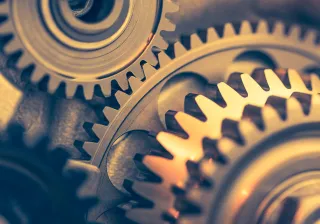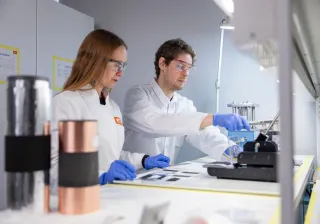Friction is everywhere. It is the force resisting motion between two components. Friction affects countless of our everyday events. Even walking would be hard if we don’t have sufficient friction between the shoe sole and the ground. We often speak about grip or traction, which are consequences of the frictional force between two contacting surfaces (tribopairs).
Surprisingly many of us are familiar with optimising friction to maximise performance in Nordic skiing. Ever changing weather conditions are affecting our tribosystem between skis and snow, resulting in a need to optimise the friction in order to provide more enjoyable moments on skate skis. One step challenging is classic cross-country skiing (kick and glide), where you need to optimise the friction at two different areas within one pair of skis; high friction for grip and low friction for gliding.
Depending on the application, we are often interested in producing either higher or lower friction. Often, we have to compromise with the level of friction. Otherwise, some other parameters such as wear would affect the process negatively. Friction is a systemic parameter that is influenced by the changes occurring in the system. Therefore, it is essential to understand the whole system when tailoring tribopairs towards their optimised friction.
By optimising friction we can save energy and improve the lifetime of materials affected by friction.
Friction affects industrial processes as well. By optimising friction we can save energy and improve the lifetime of materials affected by friction. Even 1% annual energy savings can have a big impact in expenses on a larger industrial scale. Saving energy will have an even higher role in the future when the demand for electricity increases. The same goes for the improved lifetime of materials leading to longer service intervals and decreased maintenance costs.
New material solutions to optimise friction
It is possible to optimise friction in several ways. New materials solutions for improved frictional performance are available, but we are still surprisingly eager to use old material solutions only because we are accustomed to do so.
Decreasing friction can be relatively simple. The old material solutions can be tailored for improved performance with a change just in the surface structure, which can be achieved with a coating solution, hybrid structures, textured surface structures, lubricant selection, or it can be as easy as a change in surface roughness. In this evaluation, we VTTers can help to reduce carbon footprint, increase material efficiency and save money in terms of reduced costs in energy and maintenance.






